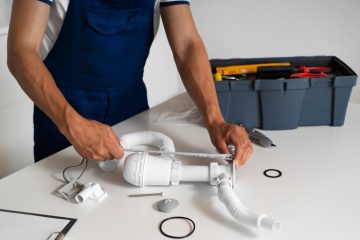When it comes to flooring materials, the options seem endless, each offering unique attributes in terms of aesthetics, durability, cost, and sustainability. Among these choices, plywood flooring stands out as a versatile and practical option that competes favorably with other popular materials like hardwood, laminate, and vinyl. Let’s explore how plywood flooring compares across these categories.
1. Aesthetic Appeal:
Plywood flooring presents a distinctive look that blends modern charm with natural warmth. Its layered composition, featuring thin sheets of wood glued together, creates a visually appealing surface with visible wood grains. The appearance of plywood can be enhanced further with different finishes, stains, or even painting, allowing for customization to suit various interior styles.
Hardwood flooring, on the other hand, offers unmatched elegance and prestige. Each plank is crafted from solid wood, showcasing rich textures and grains that enhance the character of any space. Hardwood floors are available in a wide range of wood species, from classic oak and maple to exotic options like teak and mahogany, offering homeowners diverse choices.
Laminate and vinyl flooring are designed to mimic the look of hardwood or other materials at a more affordable price point. While they can effectively replicate the appearance of natural wood, the authenticity of hardwood or plywood may still be preferred for those seeking genuine wood aesthetics.
2. Durability and Longevity:
Plywood flooring is surprisingly durable, especially when compared to solid wood planks. Its layered construction provides strength and stability, making it less susceptible to expansion and contraction due to changes in humidity. Additionally, plywood is less prone to warping and can withstand heavy foot traffic, making it suitable for both residential and commercial use.
Hardwood flooring is renowned for its durability and longevity. With proper care and maintenance, hardwood floors can last for generations, as they can be refinished multiple times to restore their original beauty.
Laminate flooring is highly durable and resistant to scratches, stains, and fading. However, unlike hardwood or plywood, it cannot be refinished, so its lifespan is generally shorter.
Vinyl flooring is also known for its durability and water resistance, making it a popular choice for kitchens and bathrooms. However, its longevity may not match that of plywood or hardwood.
3. Cost-Effectiveness:
Plywood flooring is a cost-effective alternative to hardwood, offering similar aesthetics at a fraction of the price. Due to its ease of handling and flexibility, plywood installation costs are generally lower.
Hardwood flooring tends to be more expensive due to raw materials and installation costs. Exotic hardwoods can be particularly costly.
Laminate and vinyl flooring are budget-friendly options that provide good value for money. They are typically cheaper than hardwood or plywood flooring but offer comparable aesthetics.
4. Environmental Impact:
Plywood is considered more sustainable than solid hardwood because it utilizes wood resources more efficiently. Plywood maximizes the use of available timber by using thin veneers glued together.
Hardwood flooring, particularly when sourced from responsibly managed forests, can also be environmentally friendly. However, exotic hardwoods may involve ethical concerns due to deforestation practices.
While affordable, laminate and vinyl flooring are often made from synthetic materials that are not biodegradable and may emit volatile organic compounds (VOCs) during manufacturing and installation.
5. Installation and Maintenance:
Plywood flooring is relatively easy to install and can be laid directly over existing subfloors. It can also be sanded and refinished if necessary, although this process should be approached carefully to avoid sanding through the top veneer.
Hardwood flooring requires professional installation to ensure a perfect finish. Regular maintenance, including periodic refinishing, is recommended to preserve its appearance and durability.
Thanks to their click-lock systems, laminate and vinyl flooring are designed for DIY installation. They require minimal maintenance but may need replacement rather than refinishing if damaged.
6. Versatility and Application:
Plywood flooring is highly versatile and suitable for various applications beyond residential settings. Due to its durability and cost-effectiveness, it is commonly used in commercial spaces, such as offices and retail stores.
Hardwood flooring is favored for its timeless appeal and is often chosen for high-end residential projects. However, it may not be as practical for areas prone to moisture or heavy wear.
Laminate and vinyl flooring excel in areas where moisture resistance and easy maintenance are priorities, such as kitchens, bathrooms, and basements. They can also be installed over radiant heating systems without risk of damage.
7. Sound and Thermal Insulation:
Plywood flooring offers moderate sound insulation properties, reducing noise transmission between floors. It also provides thermal insulation, helping maintain a comfortable indoor environment.
Hardwood flooring, while elegant, may require additional underlayment or rugs to improve sound absorption and thermal comfort.
Laminate and vinyl flooring typically have better sound absorption properties than hardwood or plywood. Vinyl, in particular, can be paired with underlayment for enhanced comfort and noise reduction.
8. Maintenance and Repairs:
Plywood flooring is relatively easy to maintain with regular sweeping and occasional mopping. Stains can be spot-treated, and the floor can be refinished if needed to restore its appearance.
Hardwood flooring requires more intensive maintenance, including periodic refinishing and careful cleaning to avoid water damage.
Laminate and vinyl flooring are low-maintenance options that can be cleaned with a damp mop. Repairs are often straightforward, with damaged planks or tiles easily replaced.
In conclusion, plywood flooring is a compelling choice for homeowners seeking a balance between aesthetics, durability, and affordability. While it may not have the same prestige as solid hardwood, plywood offers practical advantages and can be an excellent alternative for those looking to enhance their space with a natural, versatile material. When considering flooring options, be sure to evaluate your priorities and lifestyle to select the best fit for your home. Whether you prioritize durability, cost-effectiveness, or environmental impact, plywood flooring stands out as a reliable and versatile choice that can elevate any interior design.




